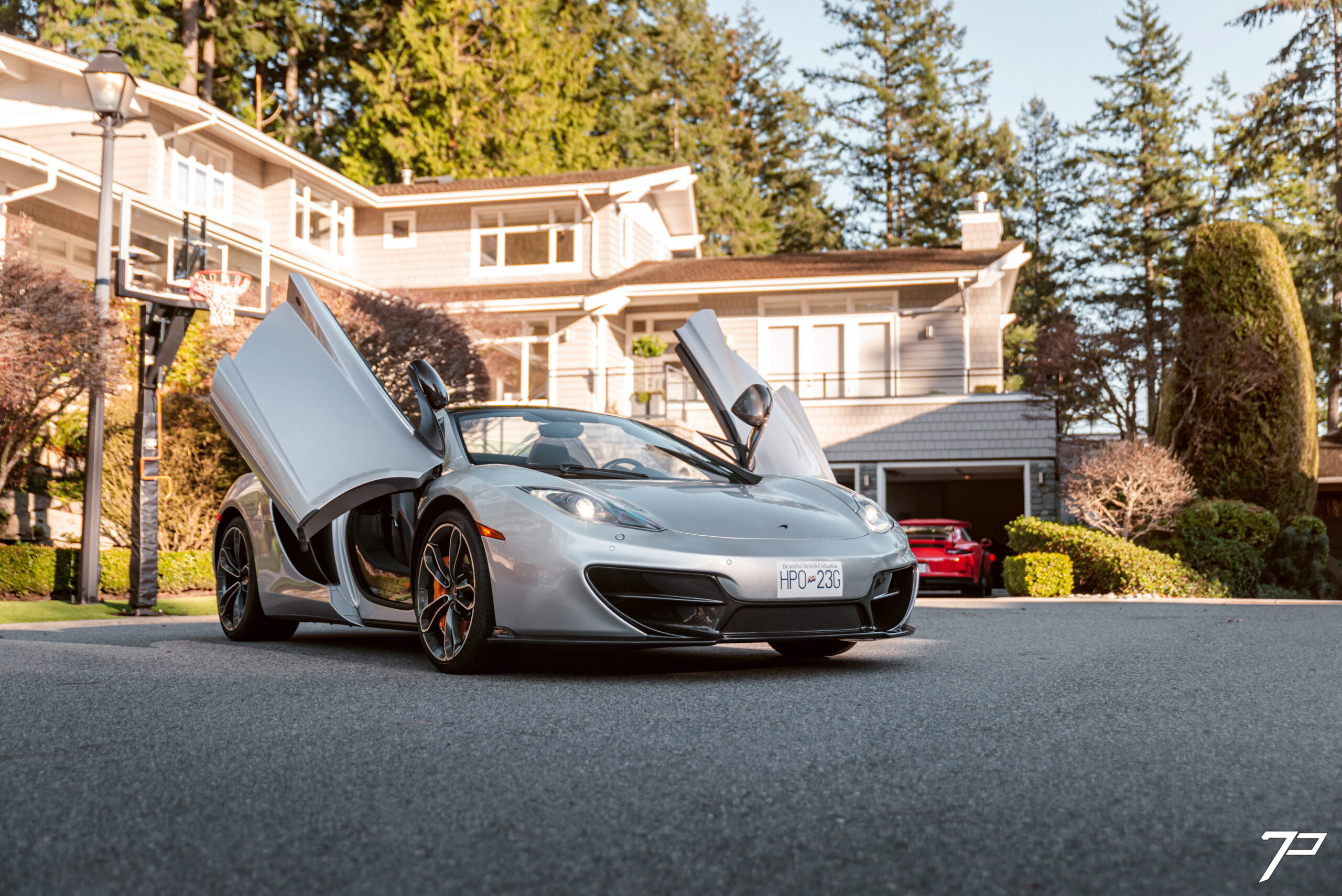Mclaren is a name synonymous with Formula 1. Since the 1960s, the team has competed with great success, only behind Ferrari in its numerous achievements. Though the company’s founder, Bruce Mclaren passed while the team was in its infancy, the company that bears his namesake has been working tirelessly to push the mindset of high performance off the racetrack since its debut F1 road car thirty years ago. Originally known as Mclaren Cars, the company lay dormant after the F1’s production was complete until its separation as a new entity in 2010. Now Mclaren Automotive, the company brings to market a new sports series line debuting with the MP4-12C. This unique model shown belongs to our friend Eric who has trusted us with his beautiful one-off McLaren MP4-12C Spider. How do you make a limited-production supercar even more unique, you ask? Enter MSO.

MSO stands for McLaren Special Operations and can be likened to Lamborghini’s “Ad Personam” or Ferrari’s “Special Projects” divisions. Officially MSO was launched at the Pebble Beach Concours d’Elegance in 2011 to provide a bespoke personalization service for McLaren customers, however, MSO’s origins actually date back almost 30 years, as the division grew out of the McLaren Customer Care Program that was set up in the early 1990s to service, maintain and personalize the McLaren F1 for owners.

Today, MSO not only offers its knowledge and expertise on the McLaren F1 but has created a unique tailoring service for McLaren customers and is broken down into five new tiers that now identify the levels of bespoke work available from McLaren Special Operations.


Through MSO Defined, MSO Bespoke, MSO Limited, MSO Heritage and MSO Programmes, McLaren Special Operations is able to offer the complete tailoring of any McLaren model. Whether it’s a custom paint colour with matching stitching for a 720S, the personalization of your McLaren F1, a dream to build a one-of-a-kind vehicle using their unique carbon fibre chassis, or the wish to experience the most powerful Mclaren to date, the new McLaren P1™ GTR, McLaren Special Operations can accommodate that desire.

Now the 12C relies on the expertise from Formula 1 for its high-performance intentions. Using a carbon-fibre tub as the passenger shell, extruded aluminum subframes attach to both ends onto which aluminum body panels are affixed. LED headlights and taillights are form-fitted with plenty of venting to move airflow. Subtle differences from MSO include a redesigned front bumper with a unique carbon splitter, along with door mirrors and side vents made from the lightweight material. The Mclaren stylized arrow logos that adorn the front and rear also have a hint of carbon, showing this is no ordinary 12C. The leather interior is spiced up with Alcantara inserts and Papaya Orange piping.


Beneath the engine cover is an all-aluminum 3.8 litre V8 mated to a 7-speed dual-clutch transaxle produced by Dana Graziano. Though Mclaren claims development for the new powertrain is in-house with technical partner, Ricardo. The V8 has some interesting origins through a partnership between Nissan and Tom Walkinshaw Racing (TWR). TWR prepared Nissan’s VRH V8 that powered Group C prototypes and the R390 GT1. Mclaren purchased the blueprints and further developed the mill into the M838T. Featuring a pair of Mitsubishi turbochargers, a flat-plane crankshaft and dry-sump lubrication, giving it a signature sound. this eight-cylinder produces 592hp and 443lb/ft of torque. All of that power propels the 12C from 0-100km/h (62mph) in 3.0 seconds, through the quarter-mile in 10.7 seconds, and onto a top speed of 343km/h (213mph).


Mclaren needed the chassis and suspension to respond well to the power provided and so it employs double-wishbone geometry at all four corners. Though it uses conventional coil springs, traditional shock absorbers and sway bars have been binned in favour of a hydraulic system dubbed “Proactive chassis control system” that can adjust in milliseconds to adapt to certain load conditions and keep the 12C level during cornering. With all of that power on tap, the braking capability needed to be up to the task of bringing the car to rest. Multi-piston aluminum calipers paired with large diameter carbon-ceramic discs (370mm front, 350mm rear) provide adequate capabilities for bringing your stomach up to your chest, should the need arise to slow down. Uniquely, the Mclaren also uses its braking system to put the power down through corners with a feature dubbed “Brake Steer”. Rather than using a limited-slip differential, mild braking is applied to the inside wheel during a turn to help point the nose into the apex and allow it to turn more quickly.

Though this is Mclaren’s first road car in decades, their experience certainly shows the 12C can be a real performer with the top up or down!






